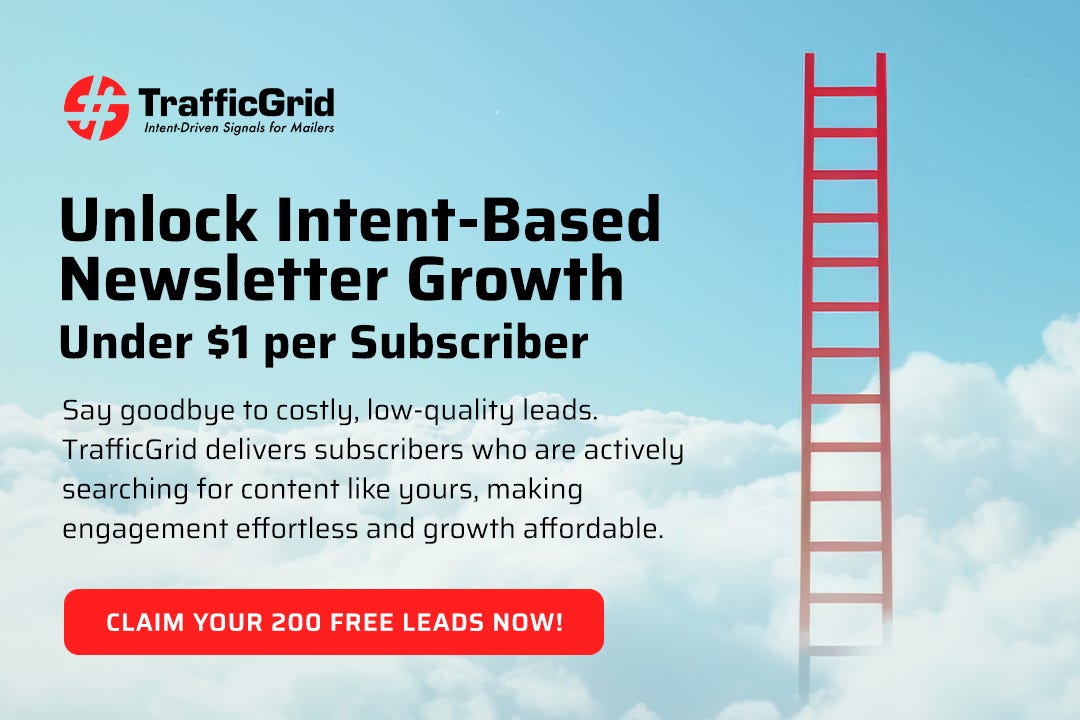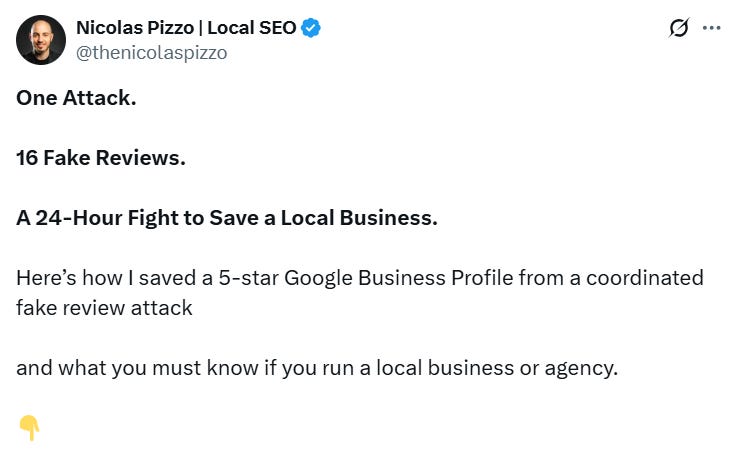Better LTV over Cheap CAC
Still treat “lowest CAC” as the holy grail? Change it before it messes your funnel up, Google’s AI Mode Ads Are Coming This Q4, and more!
Howdy Readers 🥰
In this newsletter, you’ll find:
✋Stop Optimizing for Cheap CAC, Start Buying Customers by LTV
💬 Google’s AI Mode Ads Are Coming This Q4
🚀Tweet of the Day
If you’re new to Buyology then a hearty welcome to you, You’ve reached the right place alongside 50k+ amazing people, Before you forget, if someone forwarded this newsletter to you, don't forget to subscribe to our newsletter so you never miss out!
Together with TrafficGrid
Scalable Newsletter Growth for $1 CPL, with this Secret Tool
The first thing TrafficGrid subscribers do is open your newsletter, and they keep opening it.
That’s because TrafficGrid matches your content with U.S. readers showing strong real-time interest in your niche.
They don’t just deliver leads, they deliver intent. Using 30+ signals, they serve your offer to people who already engage with newsletters like yours.
The result? $1 cost per subscriber and up to 60% open rates from week one.
One client in a sports niche achieved a 53.14% open rate and over 1,100 clicks in just 30 days with TrafficGrid. But it all starts with the first 200, completely free.
If you’re publishing to at least 5,000 U.S. readers already, you can qualify for a highly engaged 200 free leads test campaign. It’s the clearest proof your growth strategy is ready to scale.
Let’s walk you through the strategy behind it, starting with your free strategy call!
Stop Optimizing for Cheap CAC, Start Buying Customers by LTV
Most brands still treat “lowest CAC” as the holy grail. But a $25 customer who never buys again is worth far less than a $75 customer who spends hundreds over a year. Veteran marketers measure customer value on a timeline, predicted lifetime value (pLTV), and use that to drive bidding, budgeting, and creative decisions.
Why CAC Obsession Kills Scale
Ad platforms like Meta and Google optimize for first-sale efficiency, rather than long-term value. This biases campaigns toward discount-hungry, low AOV buyers who rarely return. Scaling on that audience profile means margin compression and creative fatigue.
The LTV‑Weighted Playbook
Build Cohort‑Level LTV Models – Segment customers by acquisition month, channel, creative, and first‑order details. Track repeat rates, upsells, and churn over 3, 6, and 12 months.
Spot Early pLTV Signals – First‑order AOV, SKU mix, bundle size, and even purchase timing can predict value months ahead.
Bid for Value, Not Volume – If a segment averages $300 in LTV, paying $90 CAC is smarter than $40 for a low‑LTV buyer.
Reallocate Dynamically – Shift spend toward cohorts showing strong early LTV signals and cut cheap but low‑value traffic fast.
This is where TikTok Ads can become a high‑leverage testing ground. The platform’s custom audiences, lookalike targeting, and creative tools let you cheaply identify which audience segments show premium pLTV potential before you scale them across Meta, Google, or email.
With the $200 free ad credit on $200 spend, you can validate these signals without sinking major budget into unproven segments.
Case Studies: LTV‑First Wins
Strategic Roadmap Client, +60% LTV
A DTC brand refocused its acquisition on high‑retention cohorts. By improving churn (−25%), boosting subscriptions (+40%), and aligning creatives to attract loyal buyers, they drove a 60% lift in lifetime value across all cohorts.
Power Digital Framework
Power Digital rebuilt campaigns to prioritize second‑ and third‑purchase velocity. Acquisition ads were redesigned to appeal to customers most likely to become repeat buyers, with onboarding flows built to accelerate that path.
The result: higher margins at scale and a more predictable growth curve.
The Compounding Advantage
Once you prioritize LTV, every campaign becomes a data‑driven flywheel: high‑value cohorts feed better lookalikes, guide creative targeting, and inform product sequencing. Retention loops, upsell paths, and loyalty programs extend value far beyond the first purchase.
💬 Google’s AI Mode Ads Are Coming This Q4
Google is rolling out ads inside AI Mode, its conversational search experience. Instead of targeting just keywords, AI Mode uses the full context of a conversation to place relevant ads, pulling from real‑time web data. Early testers say AI Mode queries are 2–3× longer than regular searches, giving brands more room to connect.
The Breakdown:
1. From Search Terms to Conversations – Ads will show up based on both what users ask and how the AI responds. They’ll include text and shopping formats from Search, Shopping, Performance Max, and AI Max for Search, running across mobile and desktop in English during the test phase.
2. Keeping Content & Feeds in Shape – To make the most of AI Mode, brands need accurate, up‑to‑date product feeds and websites that meet Google’s technical requirements. Focus on creating unique, valuable content with high‑quality images and videos that work in today’s multimodal search.
3. Reaching New Moments of Intent – AI Mode can spot and predict buying intent in ways traditional search can’t. That means brands can reach users during more open‑ended, exploratory searches, guiding them to the next step.
Why it matters – This is Google’s biggest change to search ads in years. By shifting from keywords to conversation context, it’s creating new ways for brands to get discovered. Advertisers who adapt early will be ready to capture attention, and sales in this new search experience.
🗝️ Tweet of the Day
Advertise with Us
Wanna put out your message in front of over 50,000 best marketers and decision makers?
Checkout our Partner Kit here🤝
At Buyology, we care about our readers and want to provide the best possible experience. That's why we always look for ways to improve our content and connect with our audience. It would be amazing if you could hit us up with feedback about our content or absolutely anything, we are always up for a chat 🥰
Thanks for your support, We'll be back with more such content 🥳



